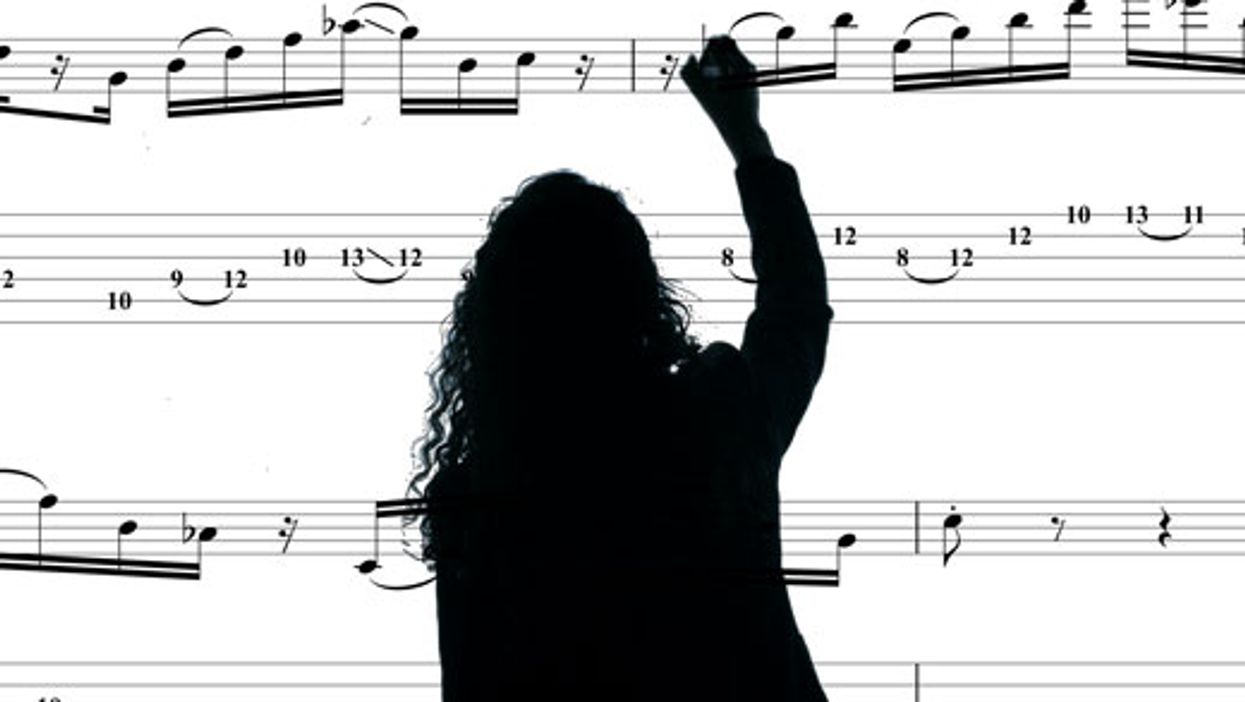Punchy Legato is a term I use to describe a hybrid texture containing both legato and staccato characteristics simultaneously. Aside from this texture being relatively common in the world of high-speed overdriven guitar playing, it also happens to be the texture I personally prefer most when it comes to playing fast.
One of the methods that I use to achieve this texture involves the use of partial barreing, which is, quite simply, the idea of flattening the tip of one or more of the fingers of your fretting hand over two or more strings in order to perform high-speed licks with minimal finger motion.
With many guitarists, this technique is commonly performed within the blues box area, since the nature of that fret lineup completely lends itself to this approach. You’ve likely seen many guitarists do this on the high E and B strings, using the first finger as the barreing finger—Eric Clapton, Johnny Winter, Jimmy Page, EVH, etc. Essentially, the first finger acts as a capo while the other fingers assume their normal fretting duties.
As a kid, I remember watching guitar players use this barreing/capo technique and thinking, what a clever way to play fast. I was totally struck by the fact that fast playing didn’t necessarily require fast finger movement as long as accurate synchronization could be maintained between left and right hands. Subsequently, it became a natural quest of mine to try and expand upon this concept, since it seemed so incredibly convenient.
Most of the significant modifications I was able to make to this approach were based on barreing with other fingers along with the index finger. When used in this manner, their function is generally quite different from that of the index finger. The index finger’s main function is to be a mini-capo, whereas the purpose of flattening the tips of other fingers over two or more strings during fast licks is generally to introduce optional or wider interval interplay.
The following examples are in the key of Eb major… better known to the guitar community as C minor.
The first few examples are basically repetitive exercises: short sequences intended to get you comfortable with barreing. The later examples show how these exercises can be incorporated into scale shapes for the purpose of randomly inserting less predictable intervals, as well as achieving that punchy legato texture.
 | |||
| Example 1: Basic 4-note barreing sequence using the C blues box. | Example 2: Variation requiring two fingers to barre the high-E and B strings. | Example 3: Variation--altering between the first two examples. | Example 4: 12-note variation--adding the G string (blues note). |
 | ||
| Example 5: 10-note sequence on three strings. | Example 6: Variation--16-note sequence. | |
 | ||
| Example 7: 32-note sequence using common scale shapes. | ||
 | ||
| Example 8: Descending run | ||
 | ||
| Example 9: Ascending and descending run using previous examples | ||
Greg Howe
Greg Howe has enjoyed a successful recording career since bursting onto the scene in 1988, and his talents have been sought after by some of the biggest names in the music entertainment industry, such as Michael Jackson, Justin Timberlake, and Enrique Iglesias















